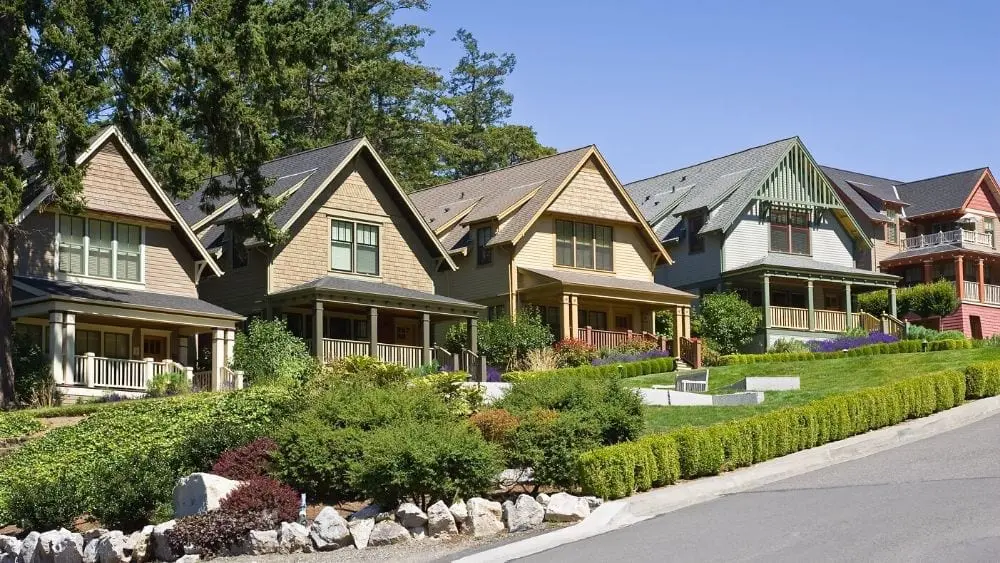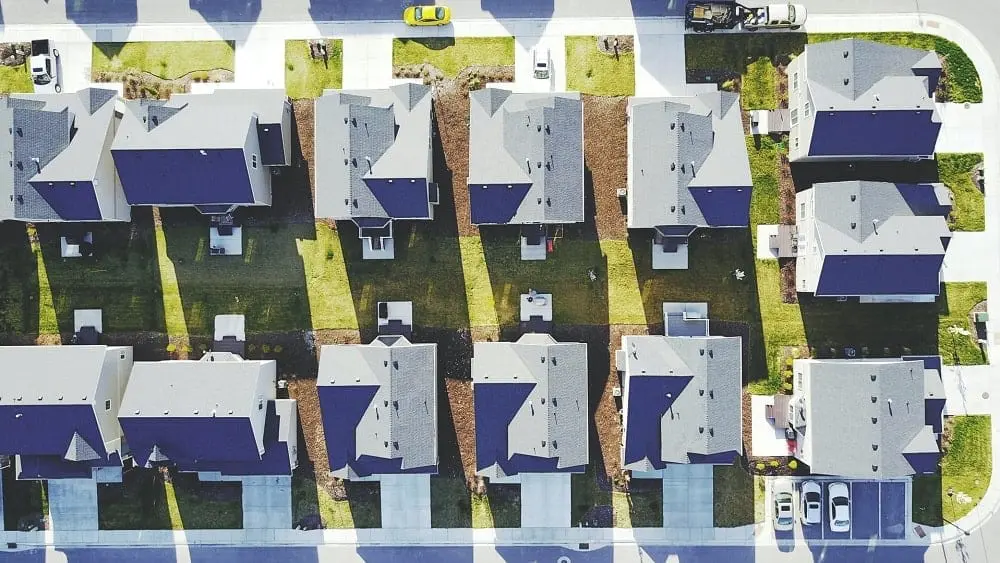If you’re buying a new home, the neighborhood you choose can be just as important as the choice of home.

So, how do you choose the best neighborhood or community?
Start by creating a list of what you need in a neighborhood, says Ruben Garmyn, a Bend, Ore., broker and owner of Team Birtola Garmyn for High Desert Realty.
“Consider the pros and cons of the neighborhood and its surroundings,” he says. “What other factors may be significant? Look at things such as a range in property value, type of property, schools and proximity to employment, comforts and other avenues of life.””
To create your short-list, it pays to start by asking the right questions:
What type of neighborhood environment do you seek? A downtown, urban vibe? A close-to-town location that blends the aspects of both city and suburban life? A leafy suburban feel? A laid-back, out-in-the-country setting?
What types of shopping, restaurants and businesses would you like near your neighborhood? A shopping mall? A favorite coffee shop? Sports fields and open park land? A movie theater? A wide array of restaurants? Art galleries and museums? A library? Live music venues? This question is related to the one above and will also help you define what matters most to you and your family.
What leisure-time activities do you enjoy? Many of today’s new home communities offer a myriad of community amenities that can support interests or hobbies you may have. You’ll find community club houses, pools, tennis courts, hiking trails, nature areas and other facilities. Community residents often form clubs based around shared interests and activities — from travel, movies, wine-tastings and more.
What type of commute do you seek? Do you work from home? Do you travel frequently and thus want quick access to the airport? If you commute daily to work, would you prefer to do so by car or mass transit? And how many minutes each way would you ideally prefer to spend traveling to and from work?
Single-Family Homes & The Suburbs Go Hand-In-Hand
For many people, home calls to mind an image of tree-lined streets with single-family homes with larger yards arrayed along winding sidewalks.
If you want more space and privacy and don’t require quick access to the heart of your city, the suburbs may be the place for you. Don’t fall victim to the misconception of suburbia as neighborhoods filled with homes that are “cookie-cutter” or have no personality. Not true! Today’s new home communities offer a wide array of home plans and elevations (the look of the front of your home) that allow you to personalize your home to reflect your individuality.
Many master-planned communities also offer a plethora of amenities, such as hike and bike trails and clubs, in which you can take part. If you have kids, plan to start a family or simply find the lifestyle appealing, the suburbs can offer a community experience that meets your needs.
Of course, many of you likely grew up in suburban homes like these. They were the primary style of housing for the majority of the 20th century. Today, there is a far greater variety of housing and neighborhood styles available for you to explore.
Low-Maintenance Homes & Communities
Neighborhoods containing so-called zero-lot line housing can be perfect for many people. If you travel often or are away from your home for extended periods of time — or simply don’t have the time or desire to maintain a large lawn — a zero-lot line home may be ideal for you.
Zero-lot line houses extend close to the edge of their property lines. Living in a neighborhood that provides less yard space means fewer yard care responsibilities but a larger amount of inside space. Many communities offering this type of housing include yard care and even exterior maintenance, allowing for the so-called “lock and leave” lifestyle where your home is tended to while you travel.
The Tresor Community in the Almaden Winery neighborhood of San Jose, Calif., is made up solely of zero-lot line houses. The homes range from 1,570 to 2,300 sq. ft. The front lawn care is handled by the home owner’s association for a monthly fee of $85.
Whether you’re a single person with a demanding job and travel schedule, an empty nester who spends part of the year in another location or a two-income household that would rather spend its time on things other than home and lawn care, a zero-lot line home with some elements of maintenance included may be ideal for you.

Transit-Oriented Neighborhoods
Do you own a car? If so, do you relish making a hefty drive to work? If you answered “no” to either question, a transit-oriented development (TOD) neighborhood may be just what you need.
“These neighborhoods are specifically built with public transportation in mind,” like a rail line or train stop, for example, says Phillip J. Pipkins, of Arizona Real Estate Property in Phoenix, Ariz. “They surround high-traffic businesses with cost-efficient housing.”
What is a Transit-Oriented Development?
Neighborhoods centered around mass transit options create a compact community that combines business, retail and residential space in one urban area that’s easy to maneuver. Young singles, empty nesters and any buyer that wants to cut the commute and live a simpler, yet urban lifestyle may find transit-oriented communities a great fit.
A popular example of a TOD neighborhood is Atlantic Station, located in Atlanta, Ga. Recently, the Texas Transportation Institute ranked Atlanta as the third worst city for traffic in the United States. Living in a TOD neighborhood like Atlantic Station could drastically cut down on that traffic-logged travel time.
Atlantic Station provides homes for 10,000 people, employment opportunities for 30,000 and shopping and entertainment for millions more. It’s home to a wide variety of restaurants, more than 50 different retail spots and expansive parks. Its wide boulevards are ideal for walking and biking to various destinations. TOD neighborhoods like Atlantic Station pack all your necessities into one place to help reduce travel time and increase living convenience.
Multi-Generational Housing
One of the biggest trends in both home and neighborhood design is multi-generational housing.
A recent Pew Research study found that 39 percent of U.S. adults are caregivers for an adult relative or friend. Multi-generational housing may just be the ideal solution for young adults in their 20s who move back in with their parents or those adults who are caregivers. This style of housing offers extra bedrooms or even small apartments or guesthouses to help give each generation its own living space.
“Multi-gen housing accommodates all walks of life and combines several generations into one community,” Pipkins says. “There are many different types of homes with a number of rooms allowing for many different needs.”
Lennar’s NEXT GEN homes, for example, offer the benefit of two separate, yet linked, homes under a single roof, without the look of a duplex home. A second smaller home within a home offers its own garage and front entry, a kitchenette and eating area, with a connection to the main home. The NEXT GEN home offers the best of both worlds — privacy and yet connection — for multiple generations to share a home.
And it’s not just the home. Many larger master-planned new home communities offer neighborhoods for active adults with a quieter feel that also offer access to the amenities of the community as a whole, including clubhouses, pools and tennis courts. Experts predict that this “neighborhood within a neighborhood” concept will grow as more baby boomers enter their active adult and retirement years.
If you anticipate having a parent or child move back in with you — or if you simply want to be surrounded by a variety of age groups — multi-generational housing neighborhoods may be an option for you.
Are Urban-Infill Neighborhoods Right for You?
If you’re not ready to head to the suburbs, up-and-coming neighborhoods could be an alternative for you. These new home neighborhoods are located closer to the city or to downtown than many suburbs typically are, yet still provide a feeling of community. Here you can find new single-family homes or townhomes that are often less expensive than homes in the urban core.
These communities are often referred to as urban in-fill communities. An example of this type of community is Stapleton, a thriving community built on the location of the former Stapleton airport in Denver, Colorado.
Across 4,700 acres of land, the developer and builders are creating a state-of-the-art mixed-use community that will offer a new generation of neighborhoods and a new standard of urban living. With 8,000 single family homes, 4,700 apartments and 13 million square feet of commercial space, 30,000 residents and 35,000 workers will contribute to a vibrant quality of life.
Like Denver, the city of Austin, Texas is re-casting a former airport as a mixed-use urban village that allows residents to live, work and play in a brand new community in an in-town location. Mueller, a sustainable, transit-oriented design community, includes a wide array of homes as well as shopping, restaurants and space to jog, bike and play. When complete, Mueller will have more than 13,000 residents, 13,000 jobs and 140 acres of green space.
Viridian, an in-fill new home community in Arlington, Texas, will be the largest in-fill community in the nation. In the heart of the Dallas-Fort Worth metroplex, this community will offer 1,100 acres of protected wetlands and open space, 20 miles of trails along the Trinity River and 450 acres of lakes.
New homes and new home communities offer something for everyone. By asking the right questions and considering all of your options, you can find the perfect neighborhood suited to you.
Kathleen Ashcraft is a former content intern with NewHomeSource. She works with Global Client Support – Morningstar Development Program in Chicago, Ill. She attended the University of Notre Dame and graduated in 2015 with a major in English and a minor in Journalism. She worked with the student-run magazine, Scholastic, writing for its Culture and Sports sections.
 11 Things to Do Around the House Before You Go on Vacation
11 Things to Do Around the House Before You Go on Vacation
nance mann
would like to buy a home in Fort Meyers Florida. I would like to spend 299,000 thru 325,000. I also would like to be in your Lagoon water park for my grandchildren.I would like to move fast on this I am an all cash buyer. Please let me know as soon as possible looking forward to getting out of Minnesota.Thank you for your time. Nance Mann 651-322-0811 or nancemann4@gmail.com
Jamie Garcia
Hi Nance,
You can find our available Fort Meyers homes here: https://www.newhomesource.com/homes/fl/fort-myers-area/fort-myers